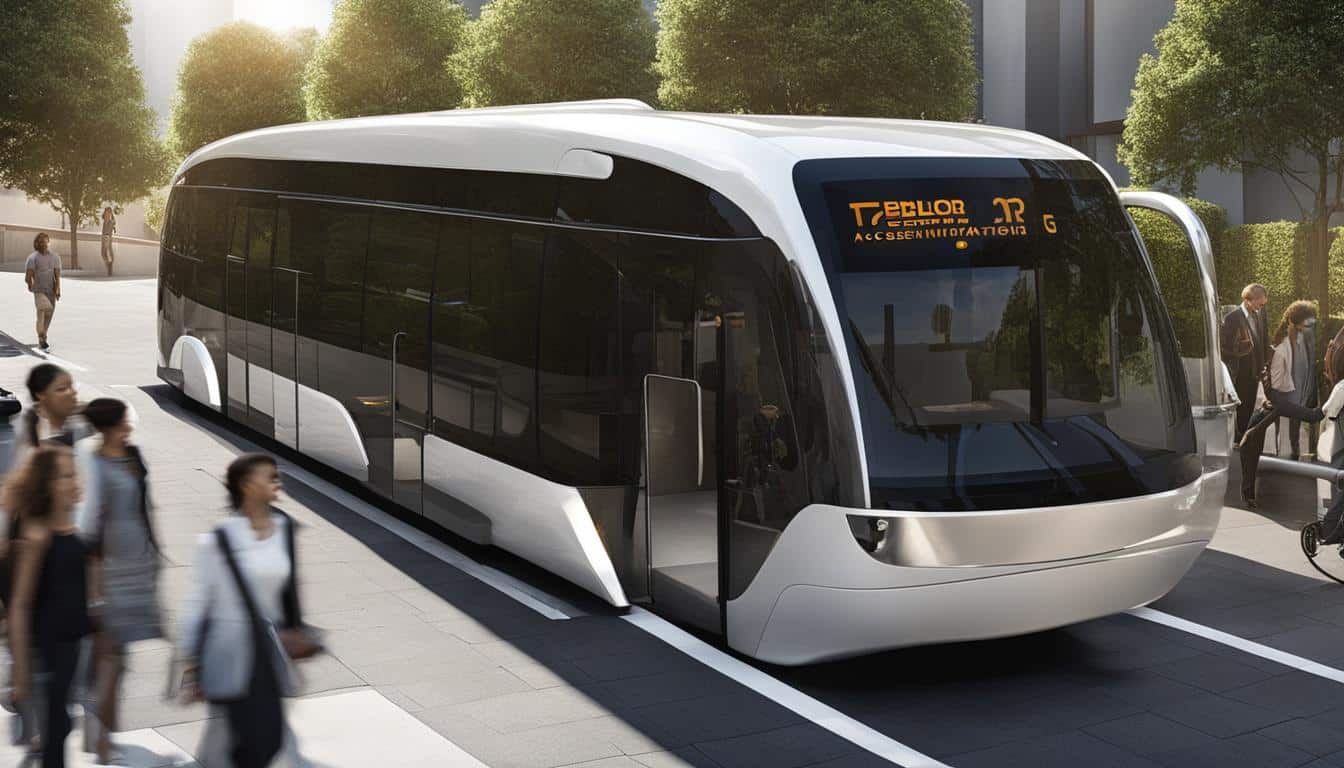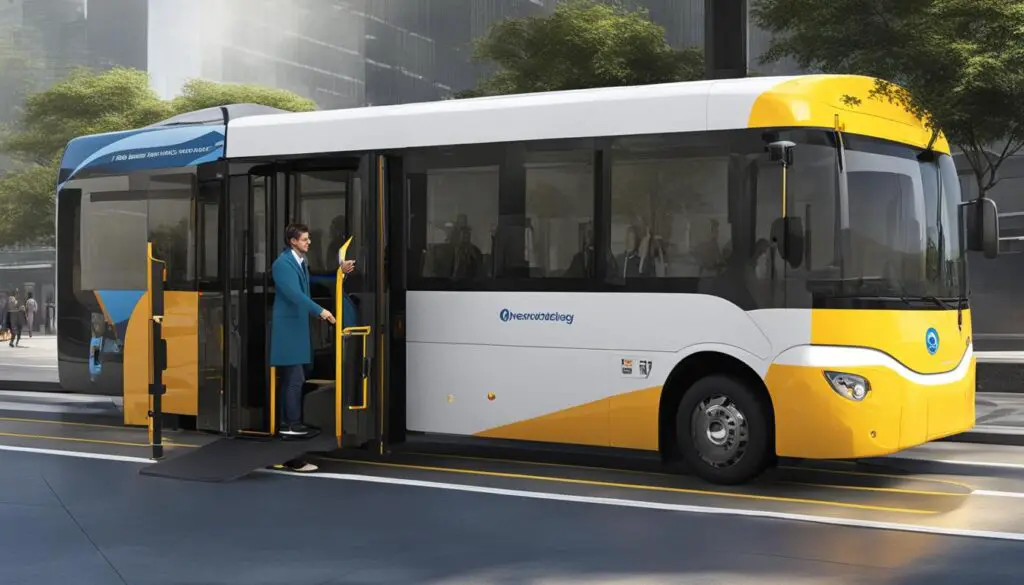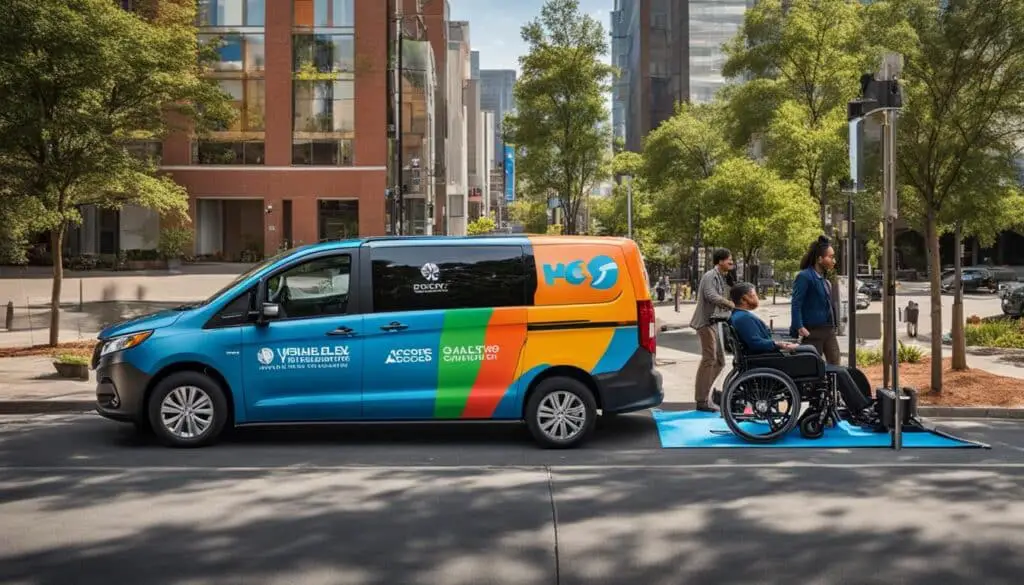
Accessible Transportation Innovations for the Disabled
Innovative advancements in accessible transportation have revolutionized mobility and independence for individuals with disabilities. These technologies and solutions aim to address the challenges faced by disabled individuals in traveling from one place to another. By leveraging cutting-edge technology and design principles, these innovations have transformed the transportation landscape, making it more inclusive and accommodating for people with disabilities.
Advancements in Wheelchair Accessible Vehicles
Wheelchair accessible vehicles have revolutionized transportation options for individuals with mobility impairments. These specially designed vehicles allow wheelchair users to maintain independence and travel comfortably without transferring from their wheelchair.
Innovations in wheelchair accessible vehicles have significantly enhanced accessibility and inclusivity. One of the key advancements is the incorporation of wheelchair ramps or lifts, enabling seamless entry and exit for wheelchair users. This eliminates the need for manual lifting or assistance, providing a safer and more convenient experience.
Moreover, adjustable seating systems have been integrated into these vehicles to improve comfort and accommodate different wheelchair sizes. This ensures that individuals with varying mobility needs can travel comfortably, reducing the risk of discomfort or injuries during transit.
Furthermore, advanced safety features have been incorporated to prioritize the well-being of disabled individuals. These vehicles are equipped with specialized restraints and securement systems to secure the wheelchair in place, ensuring stability and minimizing the risk of accidents or injuries.
With these advancements, wheelchair accessible vehicles have made it easier for disabled individuals to access public transportation and travel independently. The seamless integration of these innovations into the transportation landscape has not only improved mobility but also fostered a more inclusive society.
These innovative advancements in wheelchair accessible vehicles have transformed the lives of individuals with disabilities, empowering them to navigate the world with ease and independence.
Benefits of Wheelchair Accessible Vehicles:
- Enhanced accessibility and independence for individuals with mobility impairments
- Improved safety and comfort during transit
- Elimination of physical barriers and challenges faced by wheelchair users
- Increased inclusivity in public transportation systems
These innovations in accessible transportation have paved the way for a more inclusive society, where individuals with disabilities can enjoy equal opportunities for mobility and independence.
Assistive Technology for Public Transportation
Assistive technology has revolutionized accessibility in public transportation, empowering individuals with disabilities to navigate transportation networks with ease. Innovative solutions such as audio and visual announcements, tactile paving, and accessible ticketing systems have been instrumental in creating a more inclusive public transportation experience. These technologies ensure that vital information is readily available and easily accessible to all passengers, regardless of their abilities.
Audio and visual announcements have become a common feature in buses, trains, and subway systems, providing real-time information on upcoming stops and transfers. This not only helps individuals with visual impairments but also benefits those with cognitive disabilities or language barriers. By offering clear and concise instructions, these announcements make it easier for passengers to plan their journeys and reach their destinations efficiently.
With tactile paving, individuals with visual impairments can navigate public transportation platforms and stations independently. By following the raised or grooved surface, they can identify pathways, crosswalks, and boarding areas with tactile cues. This technology not only enhances safety but also promotes greater independence and mobility for individuals with disabilities.
Accessible ticketing systems have also improved the overall experience for disabled passengers. These systems feature intuitive interfaces, large font sizes, and clear symbols to assist individuals with visual impairments or cognitive challenges. Moreover, they often include options for mobile ticketing and contactless payment methods, reducing the need for physical contact and providing a seamless experience for all passengers.

Mobile apps and digital platforms have emerged as invaluable tools for disabled individuals using public transportation. These platforms provide real-time information on transportation schedules, service disruptions, accessibility features, and even crowd levels. By equipping passengers with this knowledge, mobile apps empower them to plan their trips more efficiently, anticipate any barriers or challenges, and make informed decisions about their journeys.
Furthermore, public transportation agencies are leveraging technology to improve accessibility through smartphone apps. For instance, some apps include features that allow commuters to request assistance or notify the driver of their next stop, providing an additional layer of support for passengers with disabilities.
In Summary
The integration of assistive technology in public transportation has significantly transformed the travel experience for individuals with disabilities. With audio and visual announcements, tactile paving, accessible ticketing systems, and mobile apps, public transportation has become more inclusive and accommodating. These innovations empower individuals with disabilities to navigate transportation networks independently, enhancing their mobility, and promoting a greater sense of freedom and inclusion.
Shared Mobility Solutions for Disabled Individuals
Shared mobility solutions have revolutionized the way disabled individuals access transportation, providing convenient and accessible options for their mobility needs. These innovative solutions not only enhance the independence and flexibility of disabled individuals but also promote inclusivity in urban transportation systems.
One of the key shared mobility solutions for disabled individuals is the availability of on-demand ride-sharing services with wheelchair accessible vehicles. This ensures that individuals with mobility impairments can easily book a ride and travel comfortably in vehicles designed to accommodate their specific needs. By leveraging technology and smart transportation systems, these services have made it easier for disabled individuals to navigate their communities with ease.
Specialized transportation services tailored to the needs of disabled individuals have also emerged as a crucial component of shared mobility solutions. These services offer personalized transportation options for disabled individuals who may require additional assistance or specialized equipment during their journeys. This includes transportation for individuals with visual impairments, individuals with cognitive disabilities, and individuals with complex medical needs.

Shared mobility solutions not only provide convenience and independence but also contribute to a more sustainable and efficient transportation ecosystem. By maximizing the utilization of vehicles through ride-sharing and pooling services, shared mobility solutions help reduce traffic congestion and lower carbon emissions. This environmentally conscious approach aligns with the broader goal of creating smarter and greener cities.
Advantages of Shared Mobility Solutions for Disabled Individuals:
- Convenient and on-demand access to transportation
- Availability of wheelchair accessible vehicles
- Personalized transportation services for specific needs
- Flexible scheduling options
- Promotes inclusivity and independence
- Reduces traffic congestion and carbon emissions
Shared mobility solutions have transformed the transportation landscape for disabled individuals, offering them greater freedom and accessibility. As technology continues to advance, these solutions will continue to evolve, providing even more tailored and inclusive transportation options for disabled individuals.
Shared mobility solutions have revolutionized the way disabled individuals access transportation, providing convenient and accessible options for their mobility needs.
Conclusion
Innovations in accessible transportation have revolutionized the lives of individuals with disabilities, providing them with enhanced mobility and independence. The advancements in wheelchair accessible vehicles have made it easier for disabled individuals to travel comfortably and confidently. By incorporating ramps, lifts, and adaptable seating systems, these vehicles have opened up new horizons for inclusive transportation.
Assistive technology systems have played a vital role in improving accessibility in public transportation. With features such as audio and visual announcements and accessible ticketing systems, disabled individuals can navigate public transportation networks with ease. The integration of mobile apps and digital platforms has further empowered individuals by providing real-time information on schedules and accessibility options.
Shared mobility solutions have emerged as a game-changer, offering flexibility and convenience. By leveraging specialized transportation services and on-demand ride-sharing platforms, disabled individuals can now travel on their own terms. These shared mobility options not only enhance accessibility but also promote independence, enabling disabled individuals to explore their communities freely.
Looking forward, the future of accessible transportation holds even more promise. As technology continues to evolve, we can expect further innovations that will break down barriers and create new opportunities for individuals with disabilities. These innovations will empower disabled individuals to lead more independent lives, unlocking new possibilities and ensuring a truly inclusive transportation system for all.
FAQ
What are the innovations in accessible transportation for the disabled?
Innovations in accessible transportation for the disabled include advancements in wheelchair accessible vehicles, assistive technology for public transportation, and shared mobility solutions specifically designed to cater to the needs of disabled individuals.
How have wheelchair accessible vehicles improved transportation options for individuals with mobility impairments?
Wheelchair accessible vehicles have significantly improved transportation options for individuals with mobility impairments by providing features such as wheelchair ramps or lifts, adjustable seating systems, and advanced safety features. These innovations have made it easier for disabled individuals to access public transportation and travel independently while remaining in their wheelchair.
What is the role of assistive technology in enhancing accessibility in public transportation?
Assistive technology plays a crucial role in enhancing accessibility in public transportation by offering features such as audio and visual announcements, tactile paving, and accessible ticketing systems. These technologies ensure that information is readily available and accessible to all passengers, regardless of their abilities. Mobile apps and digital platforms also provide real-time information on transportation schedules and accessibility features, empowering disabled individuals to plan their trips more efficiently.
How have shared mobility solutions improved access to transportation for disabled individuals?
Shared mobility solutions have improved access to transportation for disabled individuals by offering on-demand ride-sharing services with wheelchair accessible vehicles and specialized transportation services tailored to their specific needs. These solutions provide flexibility and independence, allowing disabled individuals to travel according to their own schedules and preferences.
How have innovations in accessible transportation paved the way for enhanced mobility and independence for individuals with disabilities?
Innovations in accessible transportation have paved the way for enhanced mobility and independence for individuals with disabilities by introducing advancements in wheelchair accessible vehicles, integrating assistive technology in public transportation, and providing shared mobility solutions. These innovations have made transportation more inclusive and accommodating, breaking down barriers and empowering disabled individuals to explore more opportunities and lead independent lives.
Source Links
- https://www.prnewswire.com/news-releases/govcio-opens-new-jersey-office-near-vas-technology-acquisition-center-302031371.html
- https://www.prnewswire.com/news-releases/leica-camera-and-todd-hido-launch-nationwide-photography-exhibition-and-masterclass-series-302030719.html
- https://www.prnewswire.com/news-releases/gma-consulting-and-university-of-nevada-las-vegas-black-fire-innovation-announce-additional-details-around-joint-entrepreneur-boot-camp-302031073.html
